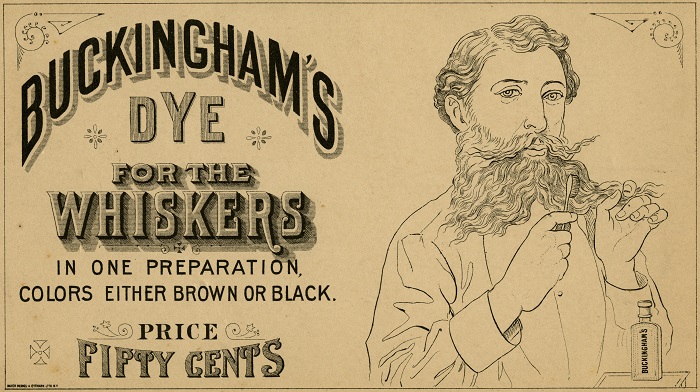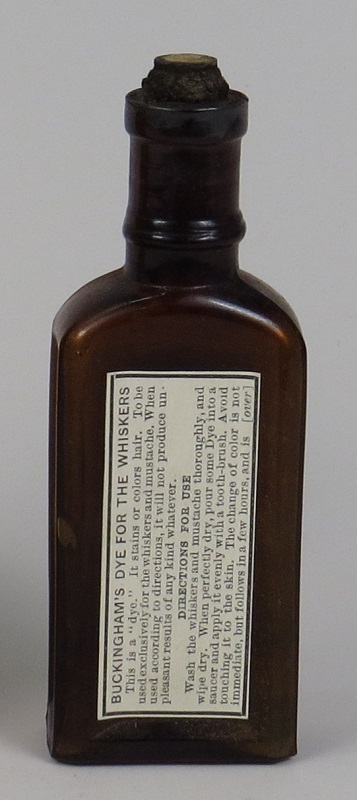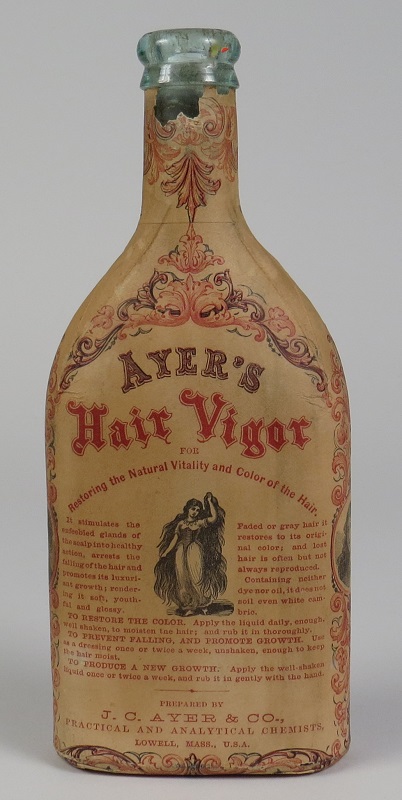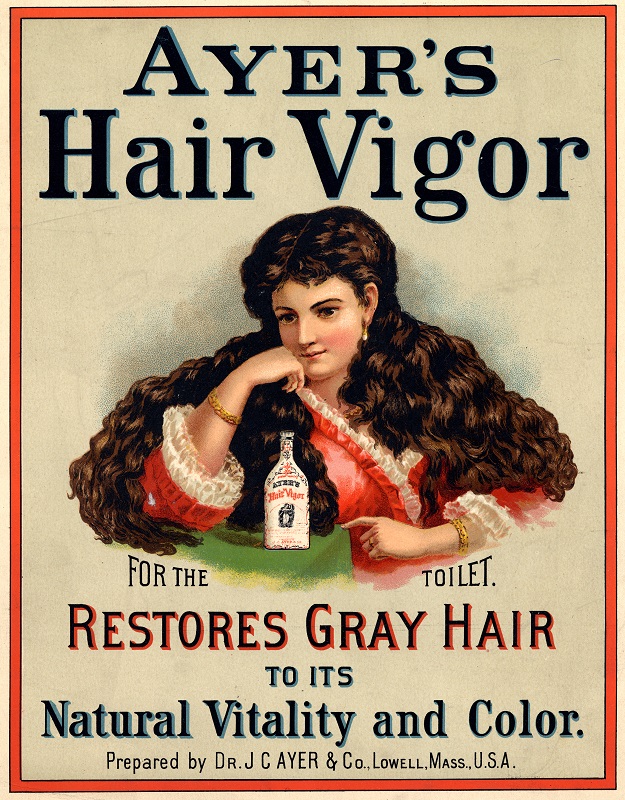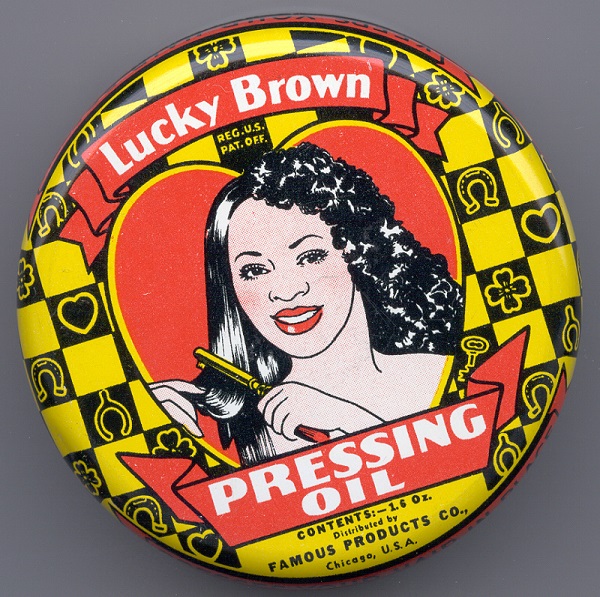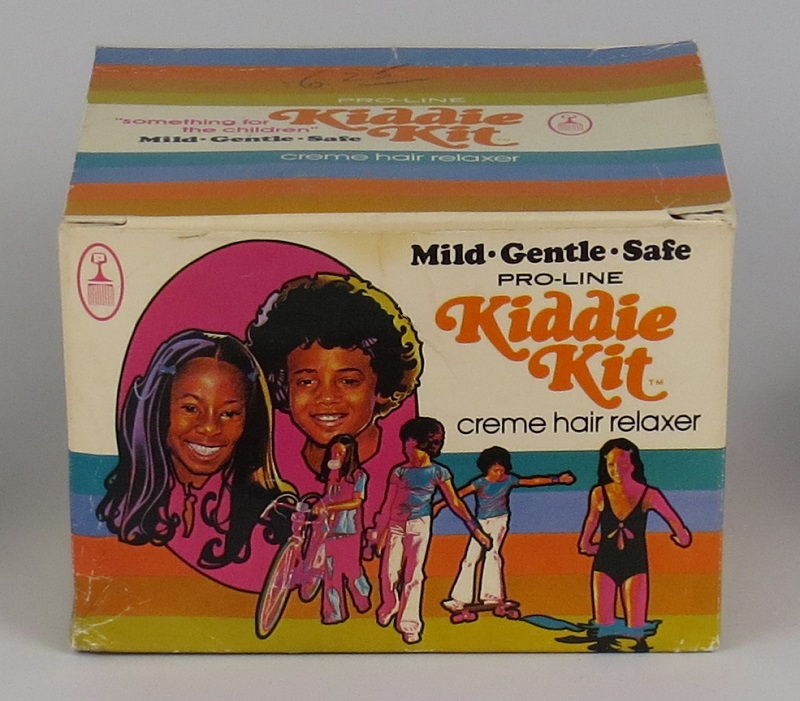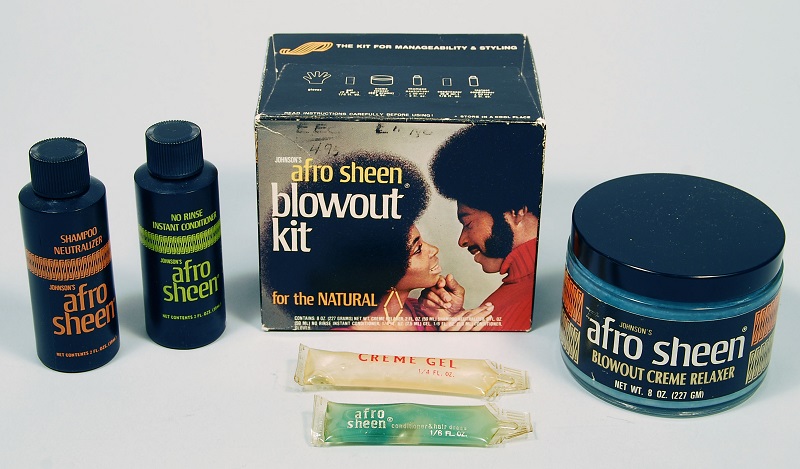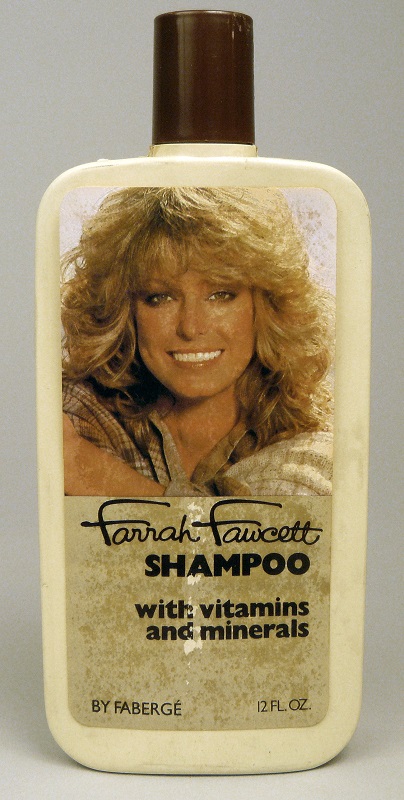This section includes products such as shampoos, hair dyes, and hair nets. The text below provides some historical context and shows how we can use these products to explore aspects of American history, for example, changing beauty standards thoughout the nineteenth century. To skip the text and go directly to the objects, CLICK HERE
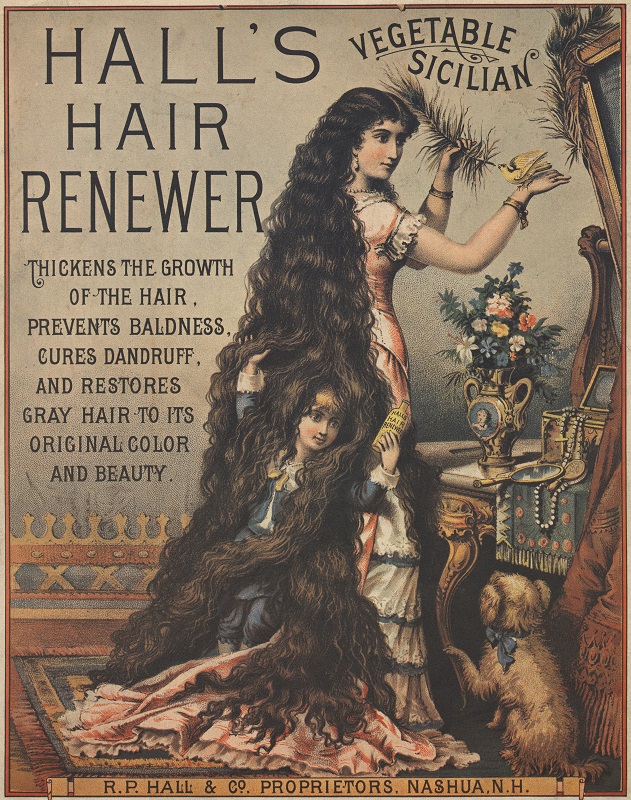 |
| Hall's Vegetable Sicilian Hair Renewer advertisement. Warshaw Collection of Business Americana, Archives Center, National Museum of American History, Smithsonian Institution |
The Museum’s collection of hair care products includes cleansers and shampoos, hair dyes and bleaches, hair straighteners and hair wavers, and hair styling products, as well as some hair accessories. Hair care products developed for, and often by, African-Americans make up a small but critical part of our collection.
Hair washing, like bathing, was not an important part of Americans' hygiene practices before the turn of the century. Rather, hair care practices focused on keeping hair thick, young-looking, styled, and free of parasites and dandruff. An aesthetic preference for long, thick, luxurious hair on women was dominant in America up until the 1920s. Images of this ideal mane of female hair abound on product packaging and advertising materials in the collection, and shampoo and tonic packaging includes grand claims regarding the healthy bounty of hair they could produce. Many of these products were aimed at both men and women, assuring them that the product could cure baldness, “renew” greying or brittle hair, and cure dandruff.
 |
| Carboline advertisement. Warshaw Collection of Business Americana, Archives Center, National Museum of American History, Smithsonian Institution |
Dyes were marketed for both women and men, as covering up grey hair with “natural” appearing color was an aesthetic ideal for both genders. Dyes for the beard were also available. Physicians criticized many hair tonics and dyes, warning that they contained toxic ingredients such as lead, or at best, were just expensively packaged household ingredients. In an article condemning the quackery of patent medicine makers, the September 1877 issue of Scientific American listed an analysis of the ingredients, for their readers’ “information and amusement,” in products such as Buckingham’s Dye for the Whiskers and Ayer’s Hair Vigor.
By the early 1900s, several hair care changes were afoot. Bathing had become an essential aspect of personal hygiene, and shampoos and cleansers for the hair became more common.
 |
| Handwritten recipe for Poro Hair Grower. Collection of the Smithsonian National Museum of African American History and Culture, 2011.170 |
Also, the introduction of products that allowed women to permanently wave their hair helped to popularize shorter styles of tightly controlled curls. This style was fashionable in America from the 1920s to the mid-1960s. Permanent waving technologies were based on a method developed by the textile industry for straightening wool fibers. Various permanent waving systems had been introduced to hair salons by the early 1900s, and these procedures used heat, chemicals, or a combination of the two to set lasting and controlled waves. The “perm’s” enormous popularity as a fashion and a salon procedure was solidified by the 1930s, and kits that allowed women to permanently wave their hair at home were introduced in the late 1940s.
Also during the 1900s, many hair products were created to straighten hair, rather than curl it. By 1906, Annie Turnbo Malone, owner of the Poro company, and Madam C.J. Walker were marketing extremely popular hair “growers” and pressing oils. These products claimed to enable African American women to style their hair into longer and looser fashions, while improving the hair health. Beginning in the 1930s, both African American men and women frequented beauty shops and barbershops that employed stronger hair straightening products, which used the same chemical process as permanent waving products. Manufacturers also marketed kits for at-home chemical straightening. At-home kits for hair relaxing and permanent waving were even marketed specifically for children.
;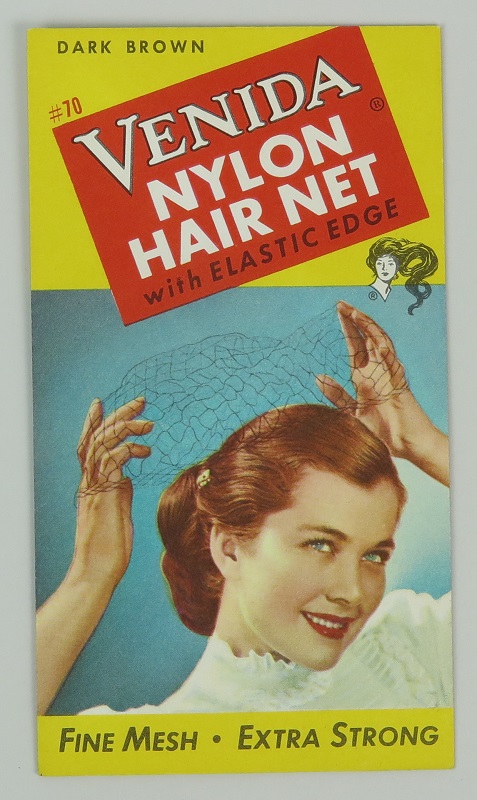 |
| Venida Nylon Hair Net |
Another popular style from the 1920s—the bob, a short, cropped hair cut—also relied on straightening products. Both white and African American women straightened their hair in order to wear this style. Hair pins gained popularity during this period, both as a method of creating tight curls in shorter hair styles and as a way of controlling bobbed hair.
The bob had an unintended effect on another hair product market: hair net sales plummeted. Women sporting the new short cuts no longer needed hair nets. The Venida hair net company hired public relations expert Edward Bernays to reverse this trend, but women persisted in cutting their hair short. Bernays then successfully convinced health commissioners, labor groups, and industry leaders to lobby for rules requiring women working in restaurants and around machinery to wear hair nets, by arguing that women going without them presented a public health, sanitation, and safety hazard. Men appear to have been exempt from these same sanitation concerns.
In the late 1960s, American fashion changed, idealizing more natural-appearing hair styles. Hair products aimed at African American consumers emphasized kinkier-textured hair and less-restrained hair styles. Hair products aimed at white Americans emphasized long, smooth, straight hair. After the 1960s, American hair fashions changed more quickly than they had in the past, and the increasing variety in hair care products reflected the American trend for greater experimentation with personal appearance.
Bibliography ~ see the Bibliography Section for a full list of the references used in the making if this Object Group. However, the Hair Care section relied on the following references:
Jones, Geoffrey. Beauty Imagined: A History of the Global Beauty Industry. Oxford; New York: Oxford University Press, 2010. http://site.ebrary.com/id/10362197.
Peiss, Kathy Lee. Hope in a Jar: The Making of America’s Beauty Culture. New York: Metropolitan Books, 1998.
“Patent Medicines and Secret Remedies.” Scientific American. Munn & Company, September 29, 1877: Vol. XXXVII, No. 13, p. 197. Accessed April 19, 1016. Google Ebook.
Sherrow, Victoria. Encyclopedia of Hair: a Cultural History. Westport, Conn.: Greenwood Press, 2006.
Sloat, Warren. 1929, America Before the Crash. New York: Macmillan, 1979.

